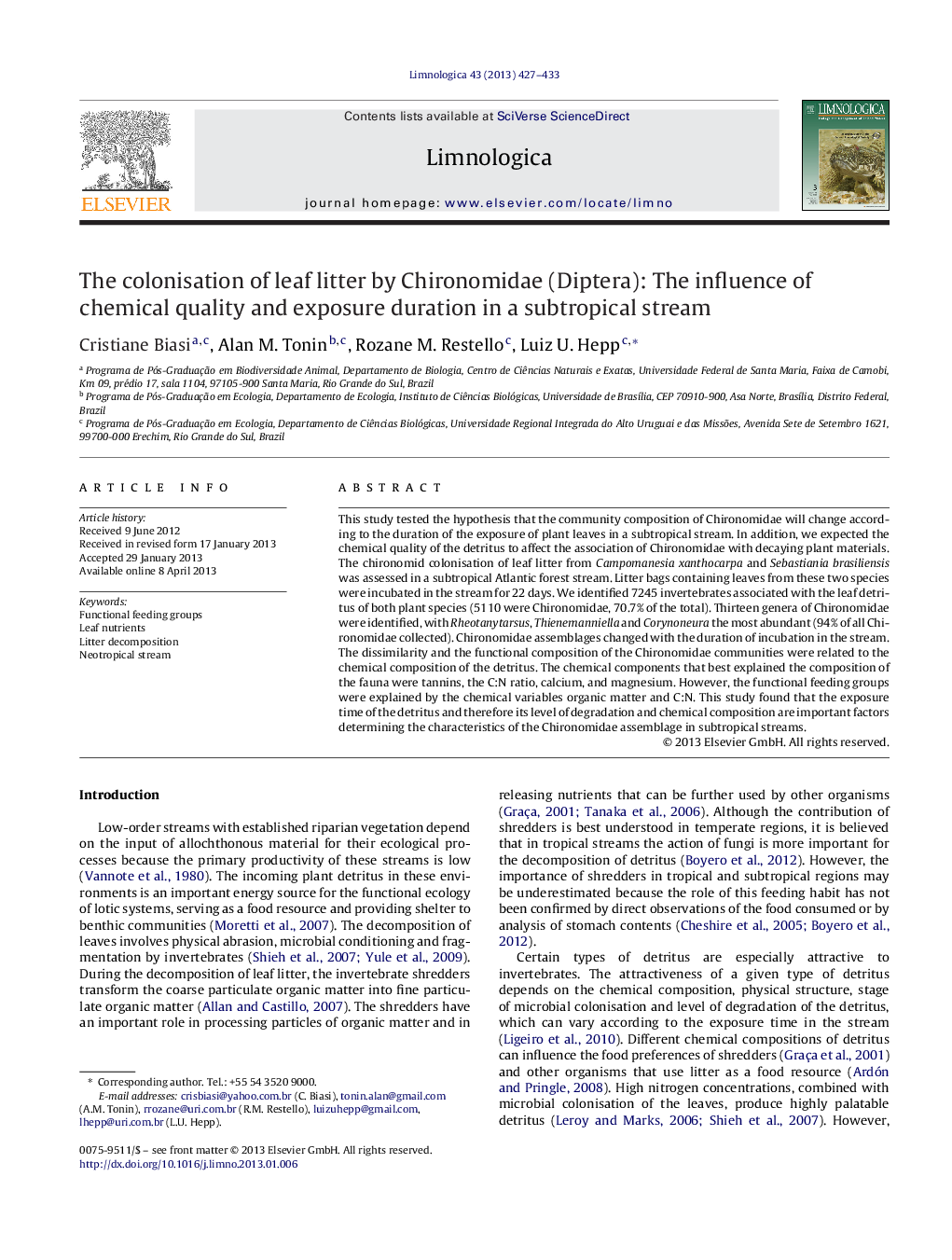| Article ID | Journal | Published Year | Pages | File Type |
|---|---|---|---|---|
| 4400410 | Limnologica - Ecology and Management of Inland Waters | 2013 | 7 Pages |
This study tested the hypothesis that the community composition of Chironomidae will change according to the duration of the exposure of plant leaves in a subtropical stream. In addition, we expected the chemical quality of the detritus to affect the association of Chironomidae with decaying plant materials. The chironomid colonisation of leaf litter from Campomanesia xanthocarpa and Sebastiania brasiliensis was assessed in a subtropical Atlantic forest stream. Litter bags containing leaves from these two species were incubated in the stream for 22 days. We identified 7245 invertebrates associated with the leaf detritus of both plant species (5110 were Chironomidae, 70.7% of the total). Thirteen genera of Chironomidae were identified, with Rheotanytarsus, Thienemanniella and Corynoneura the most abundant (94% of all Chironomidae collected). Chironomidae assemblages changed with the duration of incubation in the stream. The dissimilarity and the functional composition of the Chironomidae communities were related to the chemical composition of the detritus. The chemical components that best explained the composition of the fauna were tannins, the C:N ratio, calcium, and magnesium. However, the functional feeding groups were explained by the chemical variables organic matter and C:N. This study found that the exposure time of the detritus and therefore its level of degradation and chemical composition are important factors determining the characteristics of the Chironomidae assemblage in subtropical streams.
